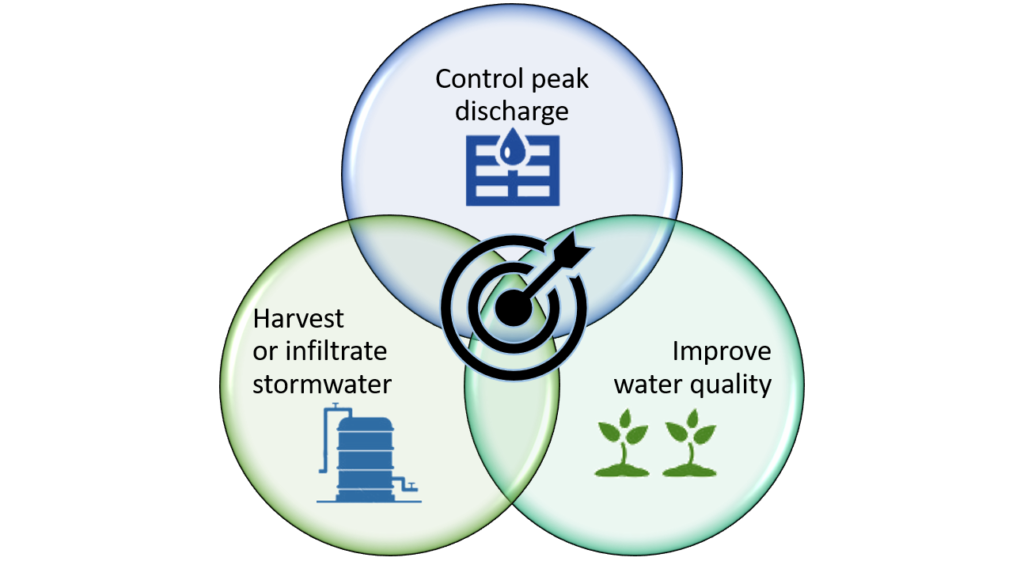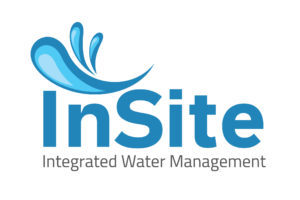Geoscience Australia has just released the final draft of Book 9 – the Urban Book of the ARR 2016 guide – a guide to flood estimation. ARR is the main standard used by civil engineers and hydrologists in Australia for design of stormwater infrastructure. This is the first major update of this standard since 1987, and it is a step change in how stormwater infrastructure is designed. In the last 30 years, stormwater approaches have evolved significantly, and the 2016 ARR guide introduces multiple objectives as well as flood mitigation (e.g. resilience, WSUD, liveability, sustainability and affordability) and the perspective of other disciplines such as aquatic ecology and landscape design[1].
The ARR Urban Book (book 9) was completed and published on 4 December 2018. The link is provided as follows:
Online Version http://book.arr.org.au.s3-website-ap-southeast-2.amazonaws.com/
PDF Version http://www.arr-software.org/arr_pdfs/ARR_Book9_FinalDraft181204.pdf

| Figure 2 Potential overlapping volume management design objectives (ARR 2016 figure 9.4.1.) |
What has changed in stormwater design?
Strategic use of water efficiency, rainwater, stormwater infiltration and wastewater recycling at multiple scales can supplement the performance of centralised water supply and drainage systems to provide more sustainable and affordable outcomes (ARR 2016). These integrated strategies reduce the requirement to transport water, stormwater and wastewater across regions with associated reductions in costs of extension, renewal and operation of infrastructure. In particular, the concept of volume management has been emphasised (ARR 2016, Book 9, Ch. 4).
The historical practice of designing urban stormwater systems has focused on peak flows, stormwater detention, and conveyance in hydraulically efficient pipes and channels. It is now recognised that volume of stormwater runoff, urban amenity and water quality treatment also need to be managed.
The ARR 2016 guide discourages the use of stormwater detention in favour of VOLUMEmanagement, except in clear cases where existing local street level pipe infrastructure needs protection in the face of increased impermeability through ongoing urban redevelopment.
The ‘volume management’ engineering design procedures that are talked about in the ARR can be found in this textbook:
Water Sensitive Urban Design: Basic Procedures for ‘Source Control’ of Stormwater A Handbook of Australian Practice Edited by John Argue, University of South Australia available for download at:
This Handbook is a compilation of basic approaches that aim at solving everyday problems of small-scale, i.e., not basin-wide, stormwater management. The document is a collaboration of the Australian Water Association, the Stormwater Industry Association and the University of South Australia.
This is achieved through design and installation of volume management and water treatment devices, such as rainwater retention tanks, rainwater infiltration systems, and unlined biological treatment devices such as raingardens, tree pits and bioswales.
The design of volume management and stormwater treatment trains must include objectives that are relevant to the site, the surrounding catchment and receiving waterways. An adequate number of facilities are required to be built and maintained in catchments to ensure that stored, harvested or infiltrated stormwater will significantly reduce peak discharges at catchment outlets, or where existing downstream infrastructure is overwhelmed by redevelopment.
Typically, compliance with ARR 2016 book 9 is also requires meeting stormwater QUALITY targets.
The InSite tool uses the targets from the Urban stormwater: Best practice environmental management guidelines[1] (BPEM, CSIRO Publishing 1999). By including a stormwater quality calculation engine, InSite water allows designers to demonstrate they are meeting stormwater quality guidelines using treatments such as raingardens, bioswales, rainwater retention tanks, and infiltration.
Limiting FLOW from a site using On-Site Detention (OSD), is still allowed to extend the usable life of existing Council stormwater pipe assets.
With the release of the new ARR 2016, Engineers Australia recommends all stormwater practitioners, including Councils, revisit and revise their stormwater management practices, methodology, policies and guidelines to include volume management and water quality targets.
How InSite Water meets the requirements of ARR 2016

InSite water has been designed from the ground up to help engineers and designers meet the requirements for the ARR2016 urban book standards. We allow projects to quickly optimise for the 4 multiple criteria targets of VOLUME management (retention), peak FLOW control (detention), stormwater QUALITY, and EFFICIENCY for drought resilience. For example we allow designers to optimise the size and setup of a rainwater to meet retention, detention, stormwater quality and water efficiency targets with the one device. Our mission is to make Integrated Water Management quick to calculate, cost effective to implement, while maintaining the engineering rigour of the ARR 2016 standard.
[1] Engineers Australia (2016) Australian Rainfall and Runoff:A guide to flood estimation, Book 9, Chapter 3 Philosophy of urban stormwater management.
[2] Urban Stormwater: Best Practice Environmental Management Guidelines. CSIRO 1999. Electronic edition published by CSIRO PUBLISHING, 2006.
